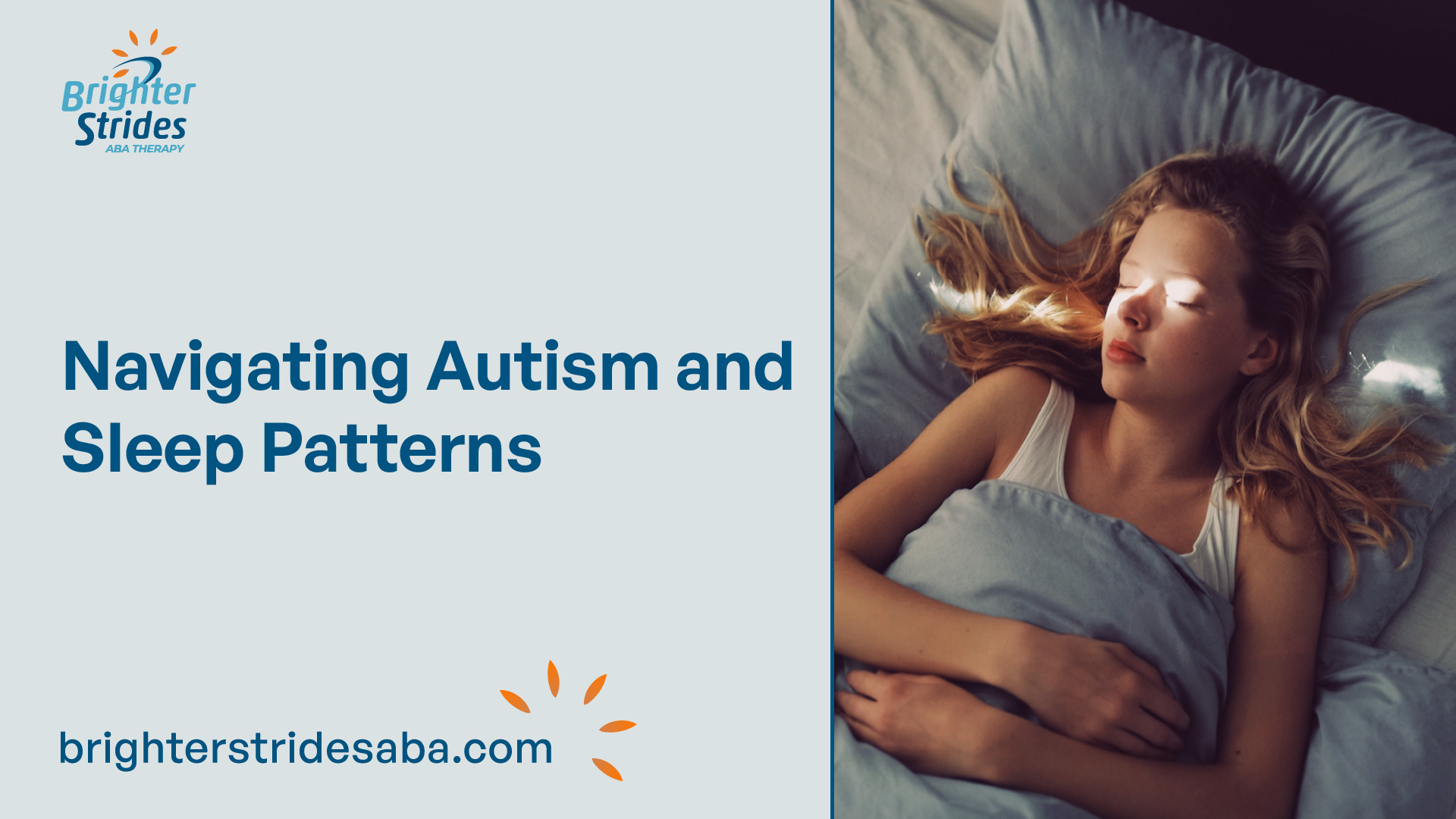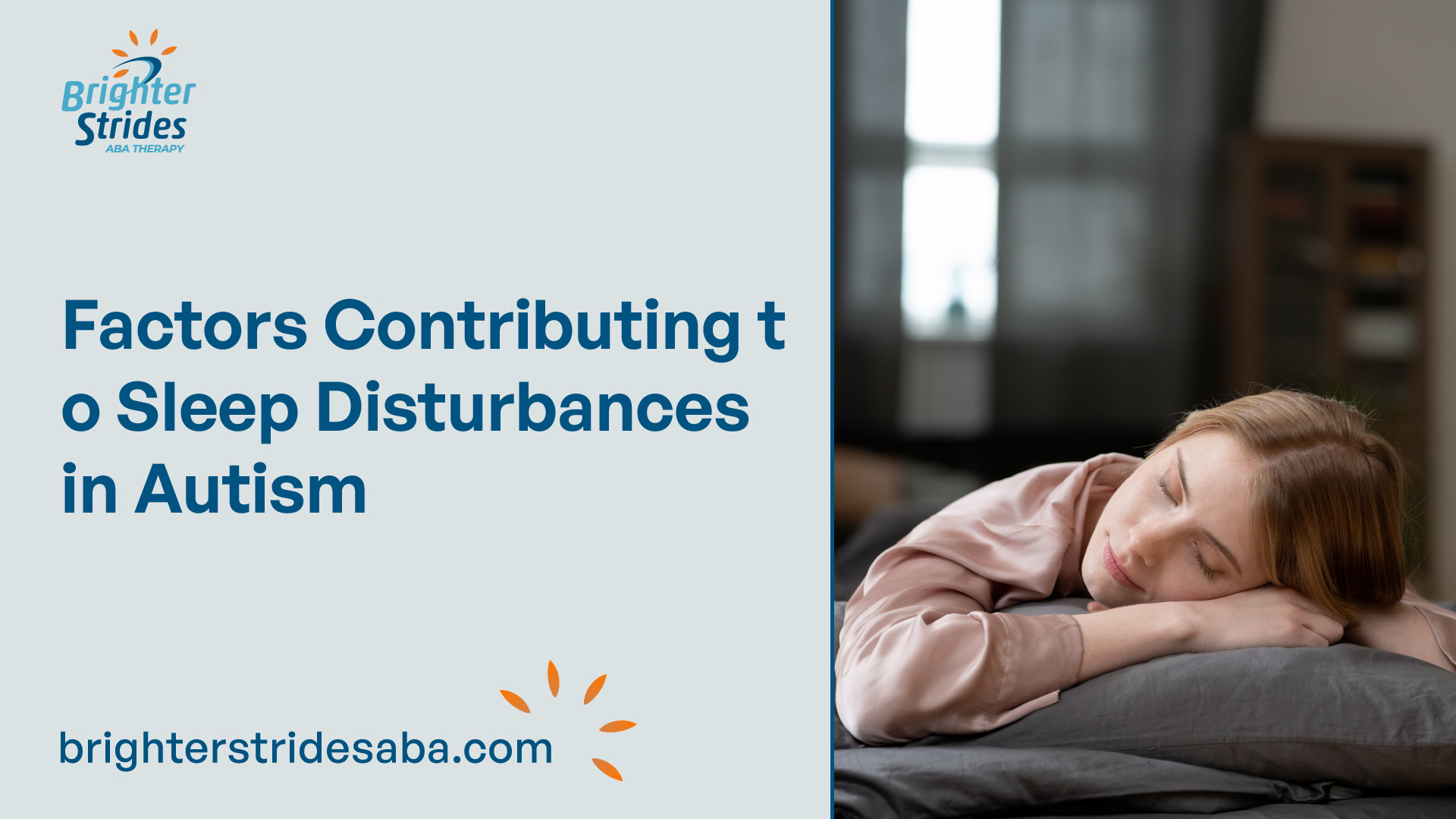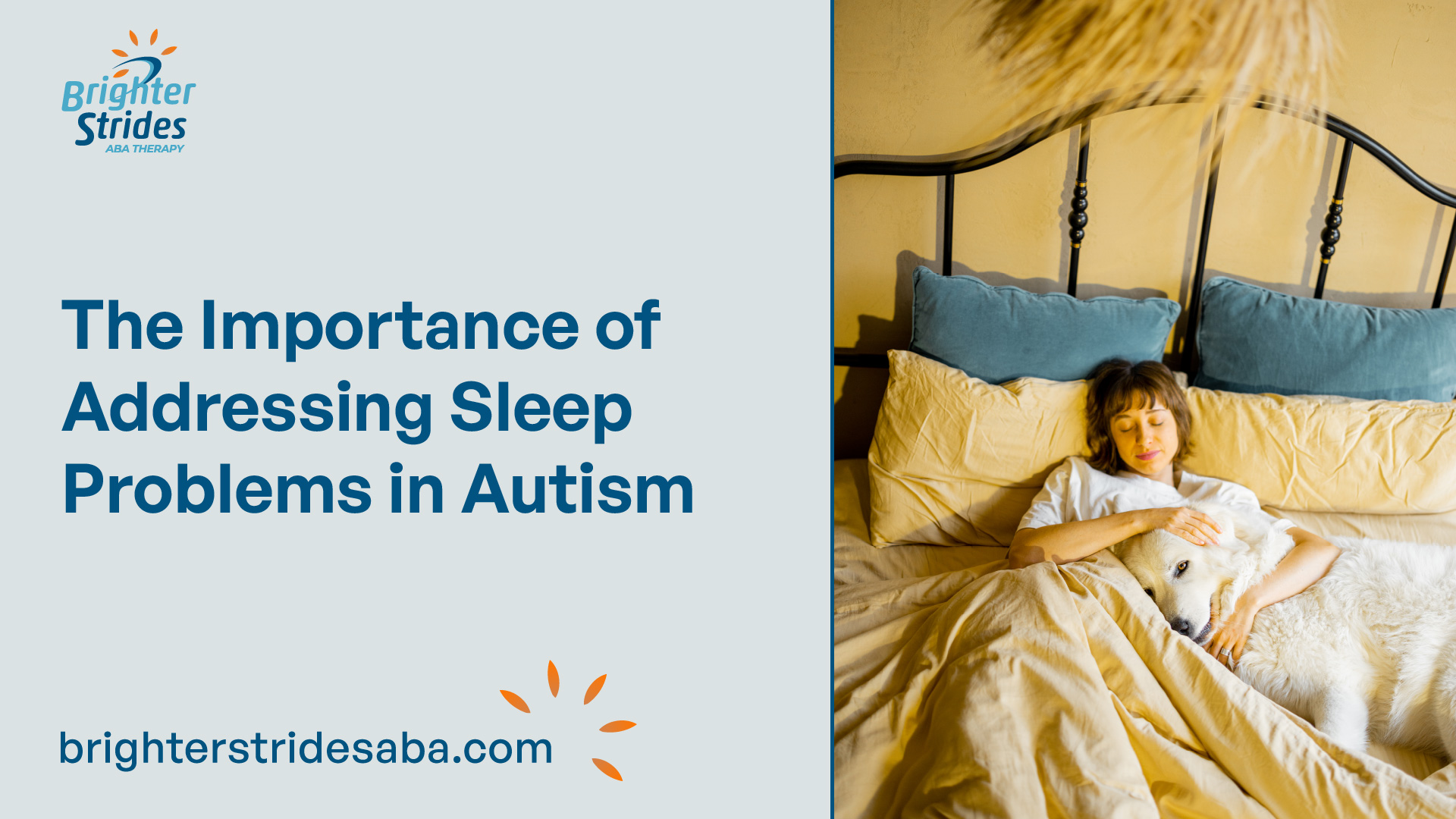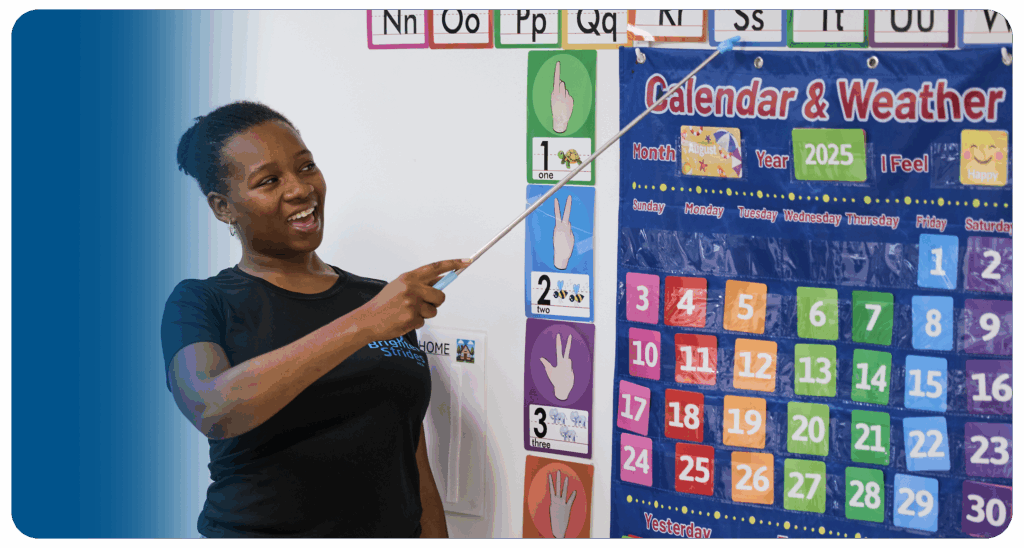
Understanding Autism and Sleep
Individuals with autism often experience unique challenges when it comes to sleep. Sleep disturbances and difficulties falling asleep and staying asleep are common among people with autism, leading to insufficient sleep. These sleep challenges can have a significant impact on their daily lives and overall well-being.
Sleep Challenges in Autism
Poor sleep affects approximately 50 to 80% of children with autism spectrum disorder (ASD), making it one of the most common difficulties for this population. Children with autism may struggle with:
- Difficulty falling asleep
- Frequent awakenings during the night
- Shortened sleep duration
- Irregular sleep schedules
These sleep challenges can persist into adolescence and adulthood if not addressed. The causes of these sleep disturbances in autism are multifaceted and can be influenced by various factors, including sensory sensitivities, gastrointestinal issues, anxiety, and epilepsy.
Impact on Daily Life
Sleep problems in individuals with autism can have a significant impact on their daily life. Sleep disturbances can exacerbate core symptoms of autism, such as social impairments and communication difficulties. When individuals with autism do not get adequate sleep, they may experience:
- Increased irritability and restlessness
- Heightened anxiety and emotional dysregulation
- Difficulty with attention and concentration
- Impaired cognitive function and learning abilities
These sleep-related difficulties can further disrupt daily routines, hinder school performance, and affect overall quality of life. It’s important to address sleep problems in individuals with autism to help improve their well-being and functioning.
Understanding the challenges individuals with autism face when it comes to sleep is the first step in finding effective strategies to promote better sleep habits. By addressing these sleep challenges, individuals with autism can experience improved overall health, well-being, and quality of life.

Factors Contributing to Sleep Disturbances in Autism
When it comes to sleep disturbances in individuals with autism, several factors can contribute to the challenges they face. Understanding these factors is crucial in developing effective strategies to improve sleep quality. The following are some common factors that can contribute to sleep disturbances in autism: sensory sensitivities, gastrointestinal issues, anxiety and stress, and epilepsy.
Sensory Sensitivities
Sensory sensitivities play a significant role in sleep disturbances among individuals with autism. Auditory and tactile sensitivities, in particular, can contribute to difficulties with sleep onset and maintenance. Research has shown that children with autism often experience more severe sensory abnormalities and sleep disturbances compared to their neurotypical peers.
Hypersensitivity towards touch has been found to have the strongest relationship with sleep disturbances in children with autism. It explains about 24% of the variance in total sleep disturbance scores. It’s important to note that sensory problems in autism can vary widely, including both hypo- and hypersensitivities in multiple sensory modalities. These sensitivities may appear at different times and in different situations for individuals with autism.
Gastrointestinal Issues
Gastrointestinal issues can also contribute to sleep disturbances in individuals with autism. These issues, such as constipation and gastroesophageal reflux, can cause discomfort and pain, making it challenging for individuals to fall asleep and stay asleep. Addressing gastrointestinal problems through appropriate medical interventions and dietary modifications may help improve sleep quality in individuals with autism.
Anxiety and Stress
Anxiety and stress are common among individuals with autism and can significantly impact sleep. The presence of anxiety and stress can make it difficult for individuals to relax and fall asleep. These heightened emotional states can cause racing thoughts and restlessness, leading to fragmented sleep. Implementing strategies to manage anxiety and stress, such as relaxation techniques and cognitive-behavioral therapy, can help improve sleep quality in individuals with autism.
Epilepsy
Epilepsy, a neurological disorder characterized by seizures, is more prevalent in individuals with autism compared to the general population. Seizures can disrupt sleep patterns and contribute to sleep disturbances. It is important for individuals with autism and epilepsy to receive appropriate medical management to control seizures and improve overall sleep quality.
Understanding these contributing factors is crucial in addressing sleep disturbances in individuals with autism. By addressing sensory sensitivities, gastrointestinal issues, anxiety and stress, and epilepsy, it is possible to develop effective strategies and interventions to improve sleep quality and overall well-being for individuals with autism.

The Importance of Addressing Sleep Problems in Autism
Understanding and addressing sleep problems in individuals with autism is crucial, as these sleep disturbances can have a significant impact on behavior and overall quality of life.
Effect on Behavior
Sleep problems in individuals with autism can exacerbate core symptoms, such as social impairment and communication difficulties, as well as compromise overall quality of life. Poor sleep affects about 50 to 80% of children with autism spectrum disorder (ASD), making it one of the most common difficulties for this population.
Sleep disturbances in individuals with ASD are frequently accompanied by co-morbid disorders and associated problems. Individuals with low-functioning autism have a higher predisposition to chronic sleep-wake cycle disturbances compared to higher-functioning individuals. Understanding and treating sleep disorders in low-functioning autism may have a positive impact on associated conditions and daytime behavior.
Sleep difficulties in individuals with ASD are heterogeneous, with multiple sleep problems being prevalent in this population. The most common sleep issues in ASD include prolonged sleep latency, decreased sleep efficiency, reduced total sleep time, increased waking after sleep-onset, bedtime resistance, and daytime sleepiness. Different sleep problems can co-exist in individuals with ASD, and these sleep difficulties can be classified as primary sleep disorders according to the International Classification of Sleep Disorders. Most of the studies exploring sleep in ASD have focused on individuals with high-functioning autism, and there is an inconsistent understanding of the nature and prevalence of sleep difficulties in low-functioning autism.
Impact on Quality of Life
Sleep problems in individuals with autism can manifest as difficulties falling asleep, staying asleep, waking up too early, or experiencing restless sleep. These disruptions can lead to daytime sleepiness, irritability, hyperactivity, and difficulties with attention and concentration. The cumulative effect of inadequate sleep can significantly impact the overall quality of life for individuals with autism.
By addressing and improving sleep in autism, individuals can experience improvements in behavior, attention, and overall functioning. Providing a restful night’s sleep can enhance the individual’s ability to engage in daily activities and improve their overall well-being.
Recognizing the importance of addressing sleep problems in autism is the first step towards developing effective strategies and interventions to improve sleep quality and promote better outcomes for individuals with autism.
Strategies for Improving Sleep in Autism
When it comes to improving sleep in individuals with autism, implementing effective strategies can make a significant difference in their sleep patterns and overall well-being. Here are three strategies that have shown promise in promoting better sleep:
Consistent Bedtime Routine
Establishing a consistent bedtime routine is one of the key strategies for improving sleep in individuals with autism. A predictable routine helps signal to the body that it is time to wind down and prepare for sleep. The routine should include calming activities, such as reading a book, taking a warm bath, or practicing relaxation techniques.
By following a consistent bedtime routine, individuals with autism can develop a sense of security and predictability, which can promote better sleep initiation and continuity. It is important to maintain the routine even on weekends or during vacations to reinforce the body’s natural sleep-wake cycle.
Creating a Sleep-Friendly Environment
Creating a sleep-friendly environment is crucial for individuals with autism to optimize their sleep quality. Some strategies to consider include:
- Lighting: Use dim lighting or consider blackout curtains to create a dark environment that promotes melatonin production, the hormone that regulates sleep-wake cycles. Nightlights can be used if needed for comfort.
- Noise: Minimize disruptive noises by using white noise machines, earplugs, or soothing music. Some individuals with autism may find certain sounds soothing, so it is important to identify what works best for them.
- Temperature and Comfort: Keep the bedroom at a comfortable temperature and ensure the bed and bedding are suitable for individual preferences. Weighted blankets have shown to influence sleep quality in individuals with autism.
- Visual Supports: Use visual supports, such as visual schedules or social stories, to help individuals with autism understand and anticipate the bedtime routine. Visual cues can provide a sense of structure and help reduce anxiety around sleep.
Clear Expectations Around Sleep
Setting clear expectations around sleep is essential for individuals with autism. Clear communication and consistent rules can help establish boundaries and promote healthy sleep habits. Some strategies to consider include:
- Communication: Explain the importance of sleep and the expectations around bedtime in a clear and concise manner. Use visual supports or social stories to reinforce the message.
- Limit Stimulating Activities: Minimize exposure to stimulating activities, such as electronic devices or engaging in intense physical activities, close to bedtime. Encourage relaxation activities instead, such as reading or listening to calming music.
- Avoid Food and Drinks That Affect Sleep: Limit the intake of foods and drinks that can interfere with sleep, such as caffeine and sugary snacks, particularly close to bedtime. Encourage a balanced diet that supports healthy sleep patterns.
Implementing these strategies can help individuals with autism establish healthy sleep patterns and improve their overall quality of sleep. It is important to remember that each individual is unique, and what works for one person may not work for another. Tailoring these strategies to meet individual needs and preferences is key to achieving optimal results.
The Role of Melatonin in Autism and Sleep
Melatonin, a hormone that helps regulate sleep-wake cycles, plays a significant role in addressing sleep difficulties in individuals with autism. It can serve as a valuable sleep aid, assisting individuals in falling asleep and staying asleep during the night.
Melatonin as a Sleep Aid
Research indicates that melatonin supplementation can be effective in improving sleep latency, total sleep time, and sleep quality in children with autism. Melatonin helps regulate the internal body clock, making it easier for individuals to initiate and maintain sleep. This is particularly beneficial for individuals with autism who experience difficulty falling asleep and struggle with irregular sleep patterns.
Effectiveness and Considerations
Melatonin is generally considered safe and well-tolerated for individuals with autism. However, it is crucial to consult with a healthcare professional before starting melatonin supplementation, as dosage and timing may vary depending on the individual’s needs.
While melatonin can be beneficial, it is important to consider other factors that may contribute to sleep difficulties in individuals with autism. Addressing sensory sensitivities, creating a sleep-friendly environment, and establishing clear expectations around sleep are also essential strategies to improve sleep in individuals with autism (refer to the previous sections for more information).
Melatonin should be used as part of a comprehensive approach to sleep management, which may include behavioral interventions, environmental modifications, and other pharmacological interventions. It is important to work closely with healthcare professionals to develop an individualized plan that addresses the specific sleep challenges faced by individuals with autism.
By understanding the role of melatonin and considering its effectiveness, individuals with autism and their caregivers can make informed decisions about incorporating melatonin supplementation into their sleep management strategies. Seeking guidance from healthcare professionals is crucial to ensure safe and appropriate use of melatonin for optimal sleep outcomes.
Behavioral Interventions for Sleep Improvement in Autism
Addressing sleep problems in individuals with autism requires a comprehensive approach that includes behavioral interventions. These interventions focus on modifying behaviors and establishing consistent routines to promote better sleep. Here are three effective behavioral interventions for sleep improvement in autism: cognitive behavioral therapy for insomnia, bedtime fading with response cost, and functional behavioral assessment.
Cognitive Behavioral Therapy for Insomnia
Cognitive Behavioral Therapy (CBT) is a widely used targeted strategy to help individuals with autism adapt to adaptive patterns of thinking and behavior, leading to positive changes in feelings and reduced functional impairment. CBT has been utilized to address various behavioral problems in autism, including sleep problems, by focusing on developing cognitive abilities to improve social interaction.
In the context of sleep, CBT for insomnia aims to identify and modify the thoughts and behaviors that contribute to sleep difficulties. It involves techniques such as sleep hygiene education, stimulus control, relaxation training, and cognitive restructuring. By addressing maladaptive thoughts and behaviors related to sleep, CBT can help individuals with autism establish healthier sleep patterns and improve sleep quality.
Bedtime Fading with Response Cost
Bedtime fading with response cost is a behavioral intervention that has shown effectiveness in improving sleep disturbances in children with autism. This intervention involves gradually adjusting bedtime to match the child’s natural sleep patterns. Initially, the child’s bedtime is set slightly later than their current sleep onset time. As the child’s sleep onset time becomes more consistent, the bedtime is gradually moved earlier.
Response cost, a technique used in conjunction with bedtime fading, involves the removal of a reward or privilege when certain behaviors occur. This can be applied when the child engages in disruptive behaviors at bedtime. By associating these behaviors with a loss of privilege, the child is motivated to adopt more desirable bedtime behaviors and routines, ultimately improving their sleep patterns.
Functional Behavioral Assessment
Functional Behavioral Assessment (FBA) is another behavioral intervention that has been found to be effective in improving sleep disturbances in children with autism. FBA involves identifying the underlying functions or purposes of problem behaviors, including those related to sleep difficulties. By understanding the triggers and maintaining factors of these behaviors, targeted interventions can be developed to address them.
The process of FBA typically involves gathering information through direct observation, interviews, and analysis of behavioral data. This information helps to identify the specific environmental and internal factors that contribute to sleep disturbances. Based on the findings, individualized strategies can be implemented to address the underlying causes and promote better sleep.
By implementing these behavioral interventions, individuals with autism can experience improvements in their sleep patterns. It’s important to note that the effectiveness of these interventions may vary for each individual, and a tailored approach is recommended. Consulting with healthcare professionals experienced in autism and sleep disorders can provide guidance in selecting and implementing the most suitable interventions for each person’s unique needs.
Environmental Modifications to Promote Better Sleep
Creating a sleep-friendly environment is essential for individuals with autism to improve their sleep quality. Making specific modifications to the sleep environment can help regulate nighttime sleep, promote better sleep patterns, and enhance overall well-being. Here are three effective environmental modifications:
Regulating Nighttime Sleep
Establishing a consistent sleep schedule is crucial for individuals with autism. Maintaining a regular bedtime and wake-up time helps regulate the body’s internal clock and promotes a more stable sleep-wake cycle. It is important to ensure that the sleep schedule is maintained on weekends as well, to avoid disruptions.

By adhering to a consistent sleep routine, individuals with autism can experience improved sleep continuity and better overall sleep quality.
Scheduled Awakening
Scheduled awakening is a technique that can help individuals with autism who experience frequent nighttime awakenings. This technique involves gently waking the individual before their usual awakening time, disrupting their sleep cycle. By doing so, it helps consolidate sleep and reduce the frequency of nighttime awakenings.

By implementing scheduled awakening, individuals with autism may experience fewer interruptions during the night, leading to improved sleep duration and quality.
Sleep Restriction
Sleep restriction is a technique that involves limiting the amount of time spent in bed to match the individual’s actual sleep needs. This technique helps create a stronger association between the bed and sleep, promoting more efficient and restful sleep.

By following a sleep restriction schedule, individuals with autism can experience a reduction in the time it takes to fall asleep and an improvement in sleep efficiency.
Implementing these environmental modifications can contribute to a more sleep-conducive environment for individuals with autism. However, it is important to consult healthcare professionals or specialists to tailor these interventions to meet the specific needs of each individual. They can provide personalized guidance and support to address sleep issues effectively and improve overall sleep quality.
Remember, creating a positive bedtime routine, using visual supports, and ensuring a comfortable and calming bedroom environment are additional strategies that can complement these environmental modifications and further enhance sleep quality in individuals with autism.
Pharmacological Interventions for Sleep in Autism
In some cases, pharmacological interventions may be considered to address sleep disturbances in individuals with autism. These interventions can help improve sleep quality and overall well-being. Two commonly used approaches are melatonin supplementation and other medications.
Melatonin Supplementation
Melatonin is a hormone naturally produced by the body that helps regulate sleep-wake cycles. In individuals with autism, melatonin supplementation can be effective in assisting with falling asleep and staying asleep. According to Autism Speaks, melatonin can help regulate sleep patterns and improve sleep quality.
The dosage of melatonin should be determined in consultation with a healthcare professional, taking into consideration the individual’s age, weight, and specific sleep issues. It’s important to start with the lowest effective dose and monitor the response closely.
It’s worth noting that melatonin should be used as part of a comprehensive approach to managing sleep disturbances in autism. It is most effective when combined with behavioral strategies and environmental modifications.
Other Medications and Considerations
In certain cases, healthcare professionals may consider other medications to help manage sleep problems in individuals with autism. However, the use of these medications should be carefully evaluated and monitored, as they may have potential side effects.
The decision to use medication should be made in consultation with a knowledgeable healthcare professional who can assess the individual’s specific needs and circumstances. Medications may be prescribed to address specific sleep disorders such as insomnia, sleep apnea, or restless leg syndrome, which can occur alongside autism.
It’s important to note that medication should not be seen as the sole solution for sleep disturbances in autism. Non-pharmacological approaches, such as behavioral interventions and environmental modifications, should also be considered as part of a comprehensive treatment plan. These approaches have been shown to be effective in improving sleep disturbances in individuals with autism.
As with any medical intervention, it is essential to consult with a healthcare professional who specializes in autism and sleep to determine the most appropriate course of action for managing sleep disturbances. Individualized treatment plans can provide the best outcomes for individuals with autism, ensuring that they receive the support they need to achieve restful and rejuvenating sleep.
Understanding Autism and Sleep
Sleep challenges are commonly experienced by individuals with autism. These sleep disturbances can have a significant impact on their daily lives. Insufficient sleep in individuals with autism can exacerbate difficult behaviors already associated with the condition. It is important to understand the factors contributing to sleep disturbances in autism and the importance of addressing these problems.
Factors Contributing to Sleep Disturbances in Autism
Several factors can contribute to sleep disturbances in individuals with autism. These include sensory sensitivities, gastrointestinal issues, anxiety and stress, and epilepsy. Sensory sensitivities, such as auditory and tactile sensitivities, can make it challenging for individuals with autism to fall asleep and maintain sleep. Gastrointestinal issues, which are common in autism, can also impact sleep patterns. Anxiety and stress levels can interfere with the ability to relax and fall asleep. Additionally, epilepsy, which is more prevalent among individuals with autism, can disrupt sleep patterns.
The Importance of Addressing Sleep Problems in Autism
Addressing sleep problems in individuals with autism is crucial due to their impact on behavior and overall quality of life. Poor sleep can exacerbate core symptoms associated with autism, such as social impairment and communication difficulties. It can also contribute to increased irritability and difficulties with attention and learning. Furthermore, inadequate sleep affects the overall well-being and functioning of individuals with autism.
Strategies for Improving Sleep in Autism
Implementing strategies to improve sleep can greatly benefit individuals with autism. Consistency is key when establishing a bedtime routine. A consistent routine can signal the body that it is time to sleep. Creating a sleep-friendly environment involves minimizing sensory distractions, such as reducing noise and providing comfortable bedding. Clear expectations around sleep, including setting rules and boundaries, can help individuals with autism understand what is expected of them at bedtime.
The Role of Melatonin in Autism and Sleep
Melatonin, a hormone that helps regulate sleep-wake cycles, can be an effective sleep aid for individuals with autism. It can assist in falling asleep and staying asleep. However, it is important to consider the effectiveness and individual considerations when using melatonin as a sleep aid in autism. Consulting with a healthcare professional is recommended to determine the appropriate dosage and usage.
Behavioral Interventions for Sleep Improvement in Autism
Behavioral interventions can be effective in improving sleep in individuals with autism. Cognitive Behavioral Therapy for Insomnia (CBT-I) is a therapeutic approach that addresses the thoughts and behaviors associated with sleep difficulties. Bedtime fading with response cost involves gradually adjusting bedtime and implementing a reward system. Functional Behavioral Assessment helps identify and address the underlying causes of sleep problems, such as anxiety or sensory sensitivities.
Environmental Modifications to Promote Better Sleep
Making environmental modifications can contribute to better sleep in individuals with autism. Regulating nighttime sleep involves maintaining a consistent sleep schedule and limiting exposure to stimulating activities before bed. Scheduled awakening entails briefly waking the individual during the night to reset their sleep pattern. Sleep restriction involves gradually reducing the amount of time spent in bed to improve sleep efficiency and consolidate sleep.
Pharmacological Interventions for Sleep in Autism
In some cases, pharmacological interventions may be considered for sleep improvement in individuals with autism. Melatonin supplementation is commonly used to regulate sleep-wake cycles. However, it is important to consult with a healthcare professional to determine the appropriate dosage and usage. Other medications may be prescribed based on individual needs and considerations.
References
- https://www.autismspeaks.org/tool-kit/strategies-improve-sleep-children-autism
- https://www.spectrumnews.org/news/sleep-problems-autism-explained/
- https://www.sleepfoundation.org/physical-health/autism-and-sleep
- https://www.ncbi.nlm.nih.gov/pmc/articles/PMC5872526/
- https://www.ncbi.nlm.nih.gov/pmc/articles/PMC4271434/
- https://www.ncbi.nlm.nih.gov/pmc/articles/PMC7856440/
- https://www.autism.org.uk/advice-and-guidance/topics/physical-health/sleep




